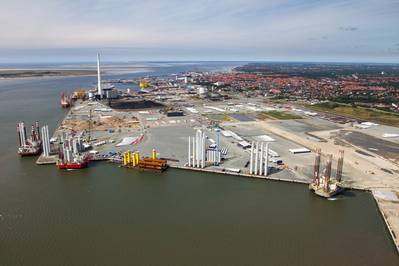Project Cargo and Heavy Lifts in the COVID-19 Environment
The year 2020 has presented a litany of challenges to the safe movement of global project cargo. While heavy lifts and engineered cargo movements always present challenges from a rigging and execution standpoint, we have also faced exceptional challenges on other fronts. These have included cancelled vessel bookings, port facilities as well as prefabrication/modulization yard closures, lack of vessel and facility access as well as travel restrictions. At Allianz Global Corporate & Specialty (AGCS), we have found that focusing on some fundamental project management principals can greatly assist in helping engineered cargo continue to move safely and efficiently during these challenging times.
Have a plan
The greatest change I have witnessed in my years moving marine cargo is the detail that goes into the planning and execution of an engineered cargo movement. Since my early days at sea aboard an Export Lines C-3, that included hand-drawn colored stow plans and rigging the booms for heavy lifts, a lot has changed. The use of detailed method statements is one of the most important changes that has occurred to help ensure safe cargo movement. The fact that we refer to it as an “Engineered Cargo Movement” goes to the root of the issue. The details of the cargo, lifting appliances, transport and securing are all clearly specified. The utilization of uniform standards for carriage ensure that all design and securing criteria can be accurately reviewed.
The method statement includes the analysis of transportation and handling of the cargo and is an essential risk management tool. It should combine detailed technical data with a thorough understanding of transportation and logistics to form a comprehensive description of how the operations of the entrusted cargo shall be conducted. A method statement is designed to ensure safe transportation operations as well as delivery of the cargo in good condition.
Review the plan
All parties involved in the execution of an Engineered Cargo Movement should have the chance to review and comment on the method statement. During this phase, it is critical that communication protocols and the escalation processes be clearly outlined. It is critical to know whom to contact if changes need approval or damages need to be reported. Given the current changes that are impacting our industry, it is also important to have a plan B is in place. There needs to be enough time provided to adequately review a method statement and provide feedback. At AGCS, we require that plans be submitted 10 working days prior to cargo movement at a minimum. This timeline allows adequate time to request clarification or adjustment without leading to delays of cargo movement.
Agree to the plan
Formalized QA checks and signoffs are important to ensure that all parties involved are on the same page and that a planned cargo movement will proceed smoothly. This helps to ensure that no detail is overlooked. In a heavy lift, we are only as strong as our weakest link – both literally and figuratively. Ensuring that all stake holders sign off the method statement prior to execution helps to eliminate potential disruptions.
Execute the plan
One key to successful execution is that we agree to what we are going to do, and we do what we agreed too. While this sounds simple and elementary, it really is one of the key aspects to a successful evolution. We do not walk onboard the day of a lift and start changing things because “this is how we always do it”. The approved method statement outlined the required steps, all parties concerned have reviewed and agreed to them, now it is time to deliver on the plan.
Verify the plan
As part of our Survey Warranty Process, we are on site to witness all cargo movements involving Project Critical Cargo. This is gaining increased importance during the current time as it is essential to be on deck to make sure everyone is on the same page. Given the current issues with delayed crew reliefs as a result of COVID-19, it is important to ensure that vessels are adequately manned. In addition, the current pandemic has brought significant stress to supply chains and have seen instances where late changes to stowage have been necessary.
COVID-19 continues to present some significant challenges to achieving in person attendance. At AGCS, we are actively utilizing technology to help us capture lifting and securing details when local conditions are preventing us from attending. This has included over the road heavy hauls as well as barge shipments. While not an ideal situation, remote technology has provided us with a solution that allows cargo to continue to move safely and securely. However, for any of this to happen the lines of communication need to be established beforehand and kept open. The steps outlined above are far more effective when communication, cooperation and collaboration are present. Fostering collaboration at times like these is the real challenge.
In summary
The shipping industry has largely proved resilient to the coronavirus outbreak, keeping the life blood of global trade and essential supplies flowing. A sharp economic downturn and difficult operating conditions, however, present a unique set of challenges. At Allianz, we continue to partner with our assureds to help ensure successful voyages. It is my hope that the insight shared here will help the reader realize success in their ventures as well.














